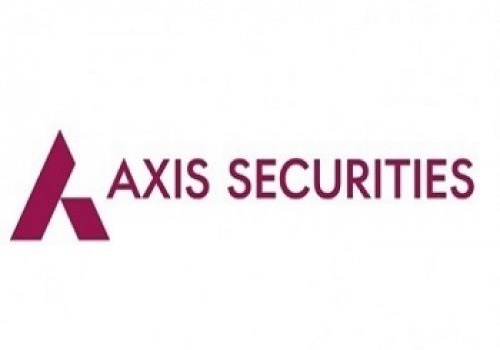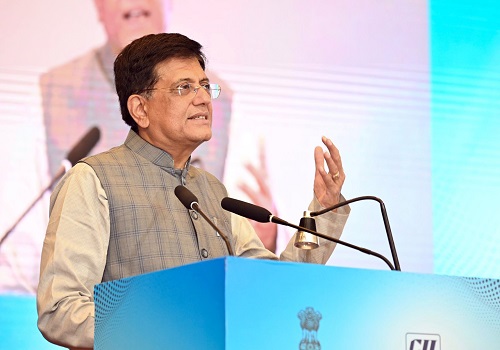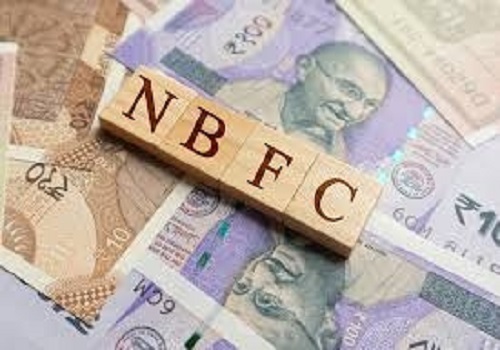NBFC Sector Update : Gold-lending guidelines: Harmonization of LTV norms; nothing disruptive by Motilal Oswal Financial Services Ltd

Gold-lending guidelines: Harmonization of LTV norms; nothing disruptive
* The RBI has issued revised draft guidelines on gold lending, which will not disrupt or tighten gold-lending activities. It is instead intended to harmonize the guidelines for regulated entities (REs) in gold lending and provide a level playing field for all classes of lenders in this product segment.
* The revised guidelines aim to: 1) establish a harmonized and uniform regulatory framework, 2) address concerns related to prevailing lending practices, and 3) strengthen conduct-related standards across gold-lending operations.
* While the revised guidelines introduce several operational enhancements missing in the previous framework, the important changes are: 1) the maximum Loan-to-Value (LTV) ratio to be maintained at ~75% throughout the tenor of the loan, 2) an additional 1% standard asset provision on the outstanding amount if the regulatory LTV ratio is breached for 30 consecutive days, 3) no renewal of gold loans if the maximum regulatory LTV is in breach at the time of maturity, and 4) bullet repayment loans would have a maximum tenor of 12 months.
Implications of LTV norms for gold-lending NBFCs
* Gold-lending regulations even earlier required scheduled banks to adhere to the LTV cap of 75% throughout the tenor of a gold loan. However, guidelines did not prescribe this for gold lending done by NBFCs, and most of them offered products with an LTV of ~75% at the time of disbursement. While NBFCs monitored the LTVs (including any accrued and unrealized interest), they were not required to act if the LTV breached 75% during the tenor of the loan, for as long as the LTVs were below their internal risk thresholds.
* A few NBFCs, which are in gold lending, as well as some SFBs and other midsized banks, had acknowledged in their respective earnings calls over the last two quarters that they were asked by the regulator to adhere to the LTV cap of ~75% throughout the tenor of the loan. Once the final guidelines are published, all NBFCs will have to adhere to the LAP cap of 75% throughout the loan tenor. This would also entail a change in policies around when margin calls are sent out to borrowers and when auction notices are sent and executed.
Impact on the gold-lending NBFCs
? The gold-lending NBFCs might also be required to withdraw products where LTV (at the time of disbursement) of ~75% is being offered currently. We believe that the gold loan industry (as it has over the last two years) will progressively continue to move towards gold loan products where customers will be required to repay interest at a frequency of 1M/3M/6M. There will be more incentives designed to encourage customers to repay the outstanding interest at regular intervals.
? The draft gold-lending guidelines are not disruptive and are only intended to harmonize the regulations for all the REs that offer gold loans. While there are a few operational changes that both banks and NBFCs will be required to implement, we do not see these guidelines as having any long- or medium-term impact on the loan growth or profitability of gold loan companies under our coverage (viz., Muthoot, Manappuram, and IIFL Finance). Our estimates and recommendations are unchanged
We present below the important guidelines published by the RBI:
LTV guidelines
* The maximum LTV ratio in respect of consumption gold loans shall not exceed 75% of the value of the gold. An LTV ceiling of 75% shall apply to all gold loans sanctioned by NBFCs, irrespective of the purpose for which the loan has been sanctioned.
* In the case of bullet repayment loans, the LTV ratio shall be computed by treating the total amount repayable by the borrower at maturity rather than the loan sanctioned at origination.
* The prescribed LTV ratio shall be maintained on an ongoing basis throughout the tenor of the loan.
* If the regulatory LTV ratio is breached for over 30 consecutive days, an additional 1% standard asset provision must be made on the entire outstanding amount. This extra provision will continue until the LTV is corrected and stays within limits for at least 30 days. Further, if the LTV is in breach at maturity, the loan cannot be renewed.
*The LTV must be calculated based on 22-carat gold prices, adjusted for purity. If the gold collateral is of purity less than 22-carat, the lender shall translate the collateral into the equivalent of 22-carat purity and accordingly value the collateral.
Lending conditions
* Lending against primary gold (bullion, bars, etc.) is prohibited.
* Only eligible gold collateral (jewelry, ornaments, specified coins) is allowed.
* Top-up or renewal loans are only allowed if the current loan is standard and within the LTV limit. The top-ups on or renewals of bullet repayment loans may be extended only after the repayment of interest accrued.
* All the lenders shall put in place proper systems and controls to ensure that the end-use of these loans is periodically monitored.
* The lenders shall not extend loans against re-pledged gold collateral.
Key operational reforms aimed at strengthening the sector
* The revised guidelines also incorporate detailed operational provisions relating to auctions, recovery processes, borrower compensation in case of delays, disclosure requirements, collateral management, and the procedures for assaying and valuing gold collateral. Restrictions and ceilings
* Lenders are prohibited from extending advances against primary gold/silver or financial instruments backed by them, such as gold/silver ETFs or mutual fund units.
* The tenor of consumption loans in the nature of bullet repayment loans shall be capped at 12 months. The bullet repayment loans by cooperative banks and RRBs shall be subject to a maximum ceiling of INR500k per borrower.
Valuation and assaying of gold collateral
* Gold collateral must be valued based on 22-carat gold prices. For gold of lower purity, its value should be proportionately adjusted to the 22-carat equivalent.
* Gold collateral will be valued using the lower of: 1) the 30-day average price, or 2) the previous day's closing price of 22-carat gold (adjusted for purity), either as quoted by the India Bullion and Jewellers Association Ltd. or the historical spot gold price data publicly disseminated by a commodity exchange regulated by the SEBI.
Collateral management
* Lenders must ensure that adequate infrastructure, facilities, and security measures are established at every branch where gold loans are sanctioned. Additionally, gold collateral must be handled exclusively within branch premises and solely by the lender’s employees.
* Lenders must return the gold within seven working days after full loan repayment. Any delay due to the lender will attract compensation of INR5k/day.
* Gold collateral remaining unclaimed for over two years after full repayment must be classified as unclaimed. Lenders must periodically trace borrowers/legal heirs and report such cases to the Customer Service Committee or Board every six months.
Income-generation loans
* Income-generating loans must be classified by their intended use, not as gold loans.
* Loan amount and tenure should be based on projected cash flows, not the value of gold collateral.
* A proper charge must be created on the primary security, in addition to the gold collateral, where applicable.
* The onus of complying with the conditions in respect of the income-generation loan shall rest with the lender, and in case of failure to do so, the same shall be treated as a consumption loan.
The lender shall implement a transparent auction process:
* Public auction with notices in two newspapers.
* The first auction must be held in the same town as the branch.
* The lenders shall declare a reserve price for the gold collateral at the time of auction, which shall not be <90% of the current value of the gold collateral.
* After the auction, lenders must disclose auction details to the borrower. Any surplus must be refunded within 7 working days, and shortfalls can be recovered as per the loan terms.
Other instructions
* Clear restrictions on misleading advertisements.
* Preferential treatment for advances against hallmarked gold as collateral, and lenders are asked to set the margin and interest rates accordingly.
* Emphasis on direct bank transfers, avoiding third-party pass-through accounts
Disclosure requirements
* Lenders are required to disclose detailed data on gold- and silver-backed loans, including the proportion of such loans in total assets.
* They must also report details of auctions, unclaimed gold, and recovery performance. These disclosures are aimed at enhancing transparency and regulatory oversight
For More Research Reports : Click Here
For More Motilal Oswal Securities Ltd Disclaimer
http://www.motilaloswal.com/MOSLdisclaimer/disclaimer.html
SEBI Registration number is INH000000412










More News

Telecom Sector Update: Good 3Q driven by stronger performance in East Africa By Motilal Oswa...













